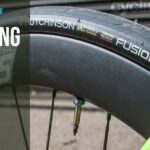Whether you’re an avid cyclist clocking miles on country roads or an urban commuter, knowing how long it takes you to bike a mile is useful for tracking fitness and planning routes. For most riders, a mile takes between 4 and 6 minutes. But many variables impact your pacing over a single mile—from bike type to terrain to your personal fitness. In this article we’ll explore the key factors that determine mile times for cyclists across all levels. Read on to enhance your speed and benchmark for your future rides.
How Long Does it Take to Bike a Mile?
For most recreational riders, biking one mile takes between 4 and 6 minutes. This assumes an average pace of 10-14 mph. However, many factors impact your speed over a mile, including fitness level, bike type, riding conditions and more.
The typical cycling speed falls in the range of 10 – 14 mph (16 – 22.5 km/h). At these speeds, the average cyclist will complete a mile in 4.25 to 6 minutes. This duration depends heavily on the rider’s fitness and experience level.
While a moderate 10-14 mph pace allows you to enjoy the scenery, competitive and highly trained cyclists can sustain much faster speeds over a mile. Racing bikes also provide an advantage with their lightweight frames and aerodynamic designs.
However, your individual time can vary greatly depending on your fitness level, bike type, terrain, weather conditions, and more. Below we’ll explore these factors in more detail.
Fitness Level Impacts Biking Speed
Your cardiovascular fitness directly correlates to how quickly you can bike a mile. The more fit you are, the less effort it takes to pedal at a brisk pace. Check out the chart below for average mile times based on fitness level:
| Fitness Level | Time to Bike 1 Mile | Average Speed |
| Beginner | 6 minutes | 10 mph |
| Intermediate | 5 minutes | 12 mph |
| Advanced | 4 minutes | 15 mph |
| Professional | 2 minutes | 30 mph |
As you can see, fitness plays a major role in biking times. By training to improve cardiovascular endurance and leg strength, you can slash minutes off your mile pace.
Aim to bike at least three days per week for 30-60 minutes to boost endurance. Add strength training twice weekly to build power. Within a few months you should notice improvements in your average speeds.
Bike Type Matters
Just as a Ferrari outpaces a Prius in a one mile drag race, specialized bikes offer speed advantages too. Road bikes and time trial bikes boast lightweight frames and skinny tires to slice through the wind with less resistance. The aerodynamic positioning also minimizes drag.
Meanwhile mountain bikes and beach cruisers weigh more and create more drag with their wide, knobby tires. So the same rider will cover a mile much faster on a lightweight road bike than a chunky mountain bike.
Here’s how average speeds compare by bike type on level roads:
| Bike Type | Time to Bike 1 Mile | Average Speed |
| Professional Time Trial | 1 minute | 60 mph |
| Road Bike | 3 minutes | 20 mph |
| Hybrid Bike | 5 minutes | 12 mph |
| Mountain Bike | 6 minutes | 10 mph |
| Beach Cruiser | 7 minutes | 8 mph |
As you shop for a new bike or upgrade components on your current ride, seek out lighter weight materials and skinny, smooth rolling tires to improve speed. Handlebar position and wheel size also impact efficiency.
Hills and Headwinds Slow You Down
While fitness and bike type influence cycling times, external factors like hills and wind can also help or hinder your progress over one mile. Let’s look at how these elements impact pace:
- Hills: A mile stretch with a 5% gradient hill adds almost 2 minutes to time trial pace. The steep incline requires significantly more effort to pedal uphill.
- Headwinds: Battling a 12 mph headwind slows cycling speed by 3-4 mph, tacking on almost a minute to the overall mile time.
- Downhills: Hitting a 5% downhill gradient boosts speed by 5 mph, shaving 40 seconds off a mile.
- Tailwinds: A 12 mph tailwind adds 3-4 mph to cycling speed, reducing mile times by around 40 seconds.
So when evaluating your biking times, consider wind direction and hills. Your fitness can conquer short hills and winds to some degree, but very steep grades or strong gusts negatively impact even pros. Plan routes accordingly if time is a major factor.
Tips to Bike a Mile Faster
Shaving seconds or even minutes off your mile pace takes strategic training, dialed gear, and proper riding technique. Follow these tips to tap into your speed demon within:
Train Smarter, Not Just Harder
Simply riding more miles without a focused training plan won’t unleash maximum speed gains. Tailor your workouts to build both cardiovascular endurance and muscular power:
- Ride 3-4 days per week, mixing endurance rides, intervals, hill repeats and speed work
- Add strength training 2x/week to build leg and core power
- Analyze data like heart rate, power and pace to fine-tune efforts
Optimize Your Gear
You wouldn’t expect a semi-truck to post fast mile times on the racetrack. Same goes for your bike – upgrade to speed-focused gear:
- Seek out lightweight bikes and components with aerodynamic tube shaping
- Run skinny, high-pressure tires to minimize rolling resistance
- Tune your bike fit to an aggressive, low-drag position
Refine Riding Technique
It’s not just about brute power. Refining technique squeezes every ounce of speed from your engine:
- Maintain a smooth, rapid pedal cadence around 90 RPM
- Eliminate choppy “coasting” and pedal consistently
- Use clipless pedals and cycling shoes to maximize pedal stroke efficiency
- Learn to draft when riding with groups
Fuel Smarter
You wouldn’t expect a car to perform without petrol. Fuel your body properly to sustain energy:
- Hydrate before, during and after rides
- Consume easily digestible carbs before and on the bike
- Refuel post-ride with carbohydrates and protein
- Avoid bonking, GI issues or sluggishness from poor nutrition
Track Progress
Analysing data from ride tracking apps, speed sensors or bike computers provides motivation by revealing tangible improvements over time.
Stay focused on these fundamentals and your next mile PR awaits!
How Far Can You Bike in One Hour?
Once you have your baseline mile time dialed in, it’s interesting to calculate how far you could bike in one hour. This long range cycling pace provides useful data for planning bike commutes, long training rides and bike tours.
To determine your hourly pace take your average speed from a one mile ride and multiply it by 60 minutes.
For example:
- 12 mph x 60 minutes = 12 miles per hour
- 15 mph x 60 minutes = 15 miles per hour
- 20 mph x 60 minutes = 20 miles per hour
Log a few one mile time trials over different terrains to calculate your sustainable speed. Then use the formulas above to project how many miles you could cover in 60 minutes.
Take note that riding at maximum effort for a full hour requires excellent fitness. More realistic hourly paces for recreational riders may be just 50-75% of your top speed. With training you can narrow that gap and ride close to your one mile PR pace for longer durations.
Apps to Track Cycling Speed and Distance
While old school cyclists still use their watches and bike computers to time runs and record pace, most riders today leverage fitness apps. Bluetooth and ANT+ connectivity built into phones, watches and sensors makes capturing ride data easier than ever.
Check out these top rated apps for tracking cycling speed, distance and other metrics:
- Strava – Free app connects with sensors to log speed, pace, power and heart rate. Analysis tools and challenges motivate.
- MapMyRide – Logs all ride metrics, maps routes, and syncs data across devices. Social platform.
- Wahoo Fitness – Pairs with Wahoo sensors and bike computers. Detailed performance analytics.
- Cyclemeter – Tracks and analyzes all cycling metrics. Automates performance summaries.
Tracking your data is invaluable for measuring progress and figuring out how to bike a mile faster. But don’t become so obsessed with numbers that you forget to have fun out there!
Frequently Asked Questions
Still have questions about how to bike a mile as efficiently as possible? Check out answers to these common FAQs:
How long should it take a beginner to bike a mile?
For a true beginner, biking one mile will take around 6 minutes. This assumes an entry level fitness level and bike. Setting a goal pace between 10-12 mph is reasonable.
How long does it take to bike 5 miles?
Biking 5 miles takes most recreational riders 30-50 minutes depending on terrain. At a 12 mph pace you would cover 5 miles in 25 minutes. At a more moderate 10 mph it would take 30 minutes.
How far can the average person bike in 30 minutes?
In 30 minutes the average recreational cyclist can bike 6-8 miles on level terrain. At just 10 mph you could cover 5 miles in 30 minutes. Kick that up to 12 mph and you’ll hit 7.5 miles.
How long does it take to bike 10 miles?
Biking 10 miles takes 50-90 minutes for most recreational riders. Cyclists that average 16 mph could finish 10 miles in about 38 minutes. But a more moderate 12 mph pace equates to 50 minutes to bike 10 miles.
How long does it take to bike 20 miles?
At a 12 mph pace, biking 20 miles takes 100 minutes or just over 1.5 hours. Faster riders at 16 mph could complete a 20 mile ride in 75 minutes. Slower recreational riders would need closer to 2 hours to finish 20 miles.
The Takeaway
Biking just one mile may sound simple, but your pace over 60 seconds or 6 minutes makes a major impact when riding for fitness, transportation or competition. Understanding all the variables that determine cycling speed is key to improving.
While fitness provides the engine, factors like bike selection, route choice and smart pacing strategies can get you across the finish line faster. Try tweaking each element to chip seconds off your mile times until you reach your ideal pace.
So how long does it take to bike a mile? For most riders it’s 4-6 minutes, while competitive cyclists can trim it down to 2-3 minutes. No matter your current pace, with training, gear upgrades, and riding strategy refinements you’ll be slashing mile times in no time and seeing your average speeds rise. Be sure to track your progress as you work to best your mile PR. Check back with Refried Cycles for more tips on increasing cycling speed, endurance and power so you can get the most out of every ride.










